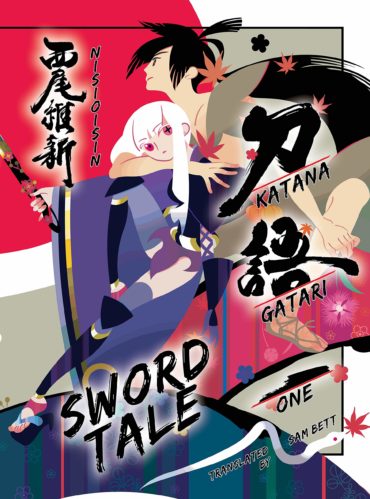Katanagatari Volume 1 Review
Usually when I talk about author NISIOISIN, I’m referring to the latest entry in the beloved Monogatari franchise. However, today I’m here with one of the author’s other series – Katanagatari. With Vertical choosing to release the series in 3-in-1 editions, we’ve certainly had a lot of content to get our heads around in this first volume…
As many of you might have guessed from the ‘Katana’ in the name, Katanagatari is a story about swords and those who (and who do not) wield them. Set in Edo-era Japan, we join Yasuri Shichika, the seventh head of the Kyotouryuu school of fighting, who lives on Fushou Island with his older sister, Nanami. The siblings are living on this isolated island after their (now deceased) father was exiled. While Shichika works hard in his daily training, the two otherwise live peacefully. One day they are unexpectedly visited by Togame, a strategist working for the shogunate. Togame comes bearing a gruelling task that she believes can only be fulfilled by one of the Kyotouryuu. If Shichika accepts, his life is bound to change forever.
Togame’s request is to have Shichika aid her in the pursuit of twelve distinct blades that were forged by Kiki Shikizaki. These weapons all carry special abilities but are said to poison those who wield them. Togame wants to take them away from their current owners and present them to the shogun to solidify his title as the strongest in Japan. The Kyotouryuu way of fighting involves not using a sword, a fighting style which Togame believes will prevent Shichika from being tempted and poisoned by the swords himself.
Without spoiling what actually happens in the first volume of this omnibus, I can say that Shichika does end up teaming up with Togame and together they go on a hunt for the twelve swords. Katanagatari is a complete series in Japan and was released as twelve volumes, one each month for a year. As you might suspect, Katanagatari spends its time focusing on one sword a book in an effort to give a complete and different plot for each novel. Each book is only 100~ pages in length but that works out well for the series, especially given NISIOISIN’s tendency to have the characters stand around talking for half a volume.
Overall, the writing for Katanagatari is both some of NISIOISIN’s best and worst work. I often comment about how nothing really happens in any given entry of Monogatari until the end, and Katanagatari is no different. However, when faced with this style in quick succession because of the omnibus format, it gets tiring. The series is not really helped by the fact that Shichika is a poor man’s Koyomi Araragi either.
Shichika has lived such an isolated life until now that he knows nothing about the outside world, and his witty conversations with Togame tend to burn out fast. As a character, he is developing from book to book and it’s rewarding to see the changes in him, I just wish that NISIOISIN hadn’t tried to make him into the fun conversationalist that Araragi is because it doesn’t really work here. Likewise, Togame is very similar to Shinobu, Araragi’s friend in Monogatari, and while I like her a lot more than Shichika, I found it difficult to care about her character. I think by the end of the series I’ll be attached to her but right now my enthusiasm for her isn’t there.
That said, although I have problems with the characters, I enjoyed the story NISIOISIN is telling. I love stories about swords – especially swords with special powers – so it’s safe to say that this was straight up my street and it made me chuckle that the protagonist doesn’t even fight with a sword himself. There’s just enough of all the right elements to hold my interest and provide a satisfying read.
This release comes to the UK thanks to Vertical and, as previously mentioned, is an omnibus holding the first three Japanese volumes. These 3-in-1 editions are set to continue for the rest of the series and this first volume is a hardback, which also includes colour inserts that depict the artwork used for Volumes 2 and 3 in Japan. Illustrations for the series have been provided by take, who also illustrates NISIOISIN’s Zaregoto series. The images on offer are a more Western style than I’m used to seeing in light novels but they’re colourful and comical in a way befitting of this art direction. I especially like that many of the illustrations are two-page spreads throughout the book.
Translation for the book has been handled by Sam Bett and is an incredibly insightful read. Throughout this release there are hundreds of footnotes giving a more literal translation for the meaning of certain words, as well as showing us the kanji used in the original text. For someone with a basic understanding Japanese, these proved to be fascinating and often led to me researching certain words and kanji on my own after finishing a chapter. You don’t need to read the footnotes to understand the story, and frankly they’re easy to ignore, but for someone like me, with a huge interest in learning Japanese and the translation process, this proved to be a wonderful addition to the release.
Overall this first volume of Katanagatari proved an enjoyable read. Although it doesn’t quite hit the heights of NISIOISIN’s Monogatari franchise, I’m sure fans of his work will still find a lot to like here. Honestly, I almost think this series is worth checking out just for the incredible effort that has gone into the translation, so ultimately Katanagatari is certainly worth your time.


